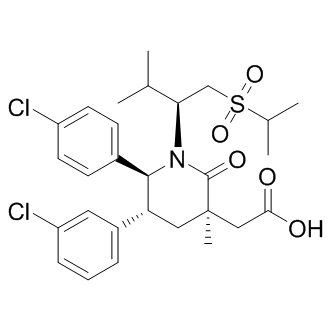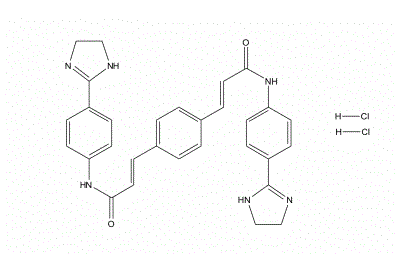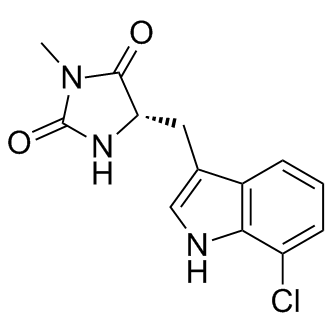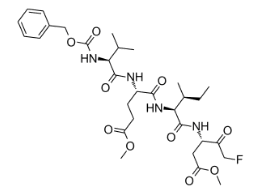Apoptosis
There are many forms of cell death, most of which can be triggered by a variety of stimuli and physiological conditions. The often compared are apoptosis and necrosis. Apoptosis has become the focus of research area due to its complex nature and the different roles of maintaining healthy and self-sustaining biological entities. On the other hand, necrosis is a form of cell damage against acute external injury and trauma, leading to passive cell death and causing an inflammatory response. [1]
The BCl-2 family has been identified as its important role in apoptosis. The BH domain promotes interaction of family members with one another and may be indicative of pro-apoptotic or anti-apoptotic functions. Usually the BCL-2 family have been classified into one of three subfamilies; anti-apoptosis, BH3 only (pro-apoptotic) and pro-apoptotic proteins. The great promise for cancer therapy has been shown in recent research about BCL-2 targeting.[2]
In the cell cycle, apoptosis acts as a fail-safe measure to prevent fidelity and proliferation quality. Although a certain degree of genetic variation is allowed and evolution is promoted, regenerative cells with extensive genetic errors and cell damage are subject to apoptosis. P53 is the Key role in the cell cycle system which initiate the apoptosis in certain cell types. P53 is a widely studied tumor suppressor. The p53 tumor suppressor gene is most frequently mutated in cancer cells (mutation occurs in more than 50% of human cancers) [3], which makes the restriction mechanism ineffective. Tumorigenesis is likely to commence when the p53-based preventive system loses its function completely.
Expression of stimuli, such as DNA damage, hypoxia and activation of certain oncoproteins (eg, Myc, Ras) are dependent on the apoptotic pathway of p53 [4]. The transactivation function of p53 plays an important role in inducing apoptosis, the pro-apoptotic proteins, Bax and lgF-Bp3, are transcriptional targets of p53.[5] As a well-known tumor suppressor, p53 is recognized for its ability to initiate apoptosis in the cell cycle and its ability to induce cell arrest and DNA repair in regenerative cells. In addition to p53, there are many other cell cycle regulators that can affect apoptosis (eg, pRb, p21).
Many studies have emphasized the importance of apoptosis in the self-defense mechanism or immune system. The immune system is responsible for rendering the host resistant to a variety of external pathogens. Apoptosis is an integral part of the immune system and helps maintain the homeostasis of the immune system. Secondly, the immune system relies on apoptosis to eliminate unwanted functional maturation of T cells and B cells [6]. Finally, apoptosis confers cytotoxicity to certain cell types (ie, cytotoxic T lymphocytes and natural killer cells). A well-coordinated disruption protocol allows these cells to destroy target cells while the target cells remain intact. Cytotoxic T lymphocytes (CTLs) can induce target cell death in two ways, one of which involves perforin and granzymes.
- Majno G. and Joris I. (1995) Apoptosis, oncosis, and necrosis. An overview of cell death. Am. J. Pathol. 146, 3–15
- Zhiqing Liu, et al. Drug Discov Today. 2016 Jun; 21(6): 989–996.
- Wang X.W. and Harris C.C. (1997) p53 tumor-suppressor gene: clues to molecular carcinogenesis. J. Cell. Physiol. 173, 247–255 10.1002/(SICI)1097-4652(199711)173:2%3c247::AID-JCP30%3e3.0.CO;2-A.
- Levine A.J. (1997) p53, the cellular gatekeeper for growth and division. Cell 88, 323–331 10.1016/S0092-8674(00)81871-1.
- Owen-Schaub LB,et al. Owen-Schaub LB,Wild-type human p53 and a temperature-sensitive mutant induce Fas/APO-1 expression. Mol Cell Biol. 1995 Jun; 15(6):3032-40.
- Russell J.H. (1995) Activation-induced death of mature T cells in the regulation of immune responses. Curr. Opin. Immunol. 7, 382–388 10.1016/0952-7915(95)80114-6.
-
Idasanutlin (RG7388)
Catalog No. A14211 -
PROTAC MDM2 Degrader-2
Catalog No. A18890 MDM2 inhibitorPROTAC MDM2 Degrader-2 is a MDM2 degrader based on PROTAC technology. PROTAC MDM2 Degrader-2 composes of a potent MDM2 inhibitor, linker, and the MDM2 ligand for E3 ubiquitin ligase. 了解更多 -
PROTAC MDM2 Degrader-4
Catalog No. A18877 MDM2 inhibitorPROTAC MDM2 Degrader-4 is a MDM2 degrader based on PROTAC technology. PROTAC MDM2 Degrader-4 composes of a potent MDM2 inhibitor, linker, and the MDM2 ligand for E3 ubiquitin ligase. 了解更多 -
Apoptosis Inhibitor (M50054)
Catalog No. A13058 -
BV-6
Catalog No. A14231 -
AT-406 (SM-406, ARRY-334543)
Catalog No. A11163 IAP 抑制剂AT-406 (SM-406,ARRY-334543)是IAP家族蛋白质的口服生物利用抑制剂,具有潜在的凋亡诱导和抗肿瘤活性。AT-406选择性抑制IAP蛋白的生物学活性,包括X染色体连锁IAP(XIAP),细胞IAP 1(c-IAP1)和2(c-IAP2)和黑色素瘤凋亡抑制蛋白(ML-IAP)。 了解更多 -
Pomalidomide (CC-4047)
Catalog No. A10743 TNF-alpha 抑制剂Pomalidomide (CC-4047)是沙利度胺的衍生物,在PBMCs中IC50为13 nM,并起免疫调节剂的作用。 了解更多 -
Necrostatin-1
Catalog No. A11973 RIPK1 抑制剂Necrostatin-1是一种与ATP竞争的,与受体相互作用的蛋白激酶1(RIPK1)的变构抑制剂(EC50 = 182 nM)。 了解更多 -
GW 4869
Catalog No. A11974 -
Necrostatin 2
Catalog No. A15183 -
Necrostatin 2 racemate
Catalog No. A15327 -
Necrostatin 2 S enantiomer
Catalog No. A15328 -
Thalidomide
Catalog No. A10924 -
QNZ (EVP4593)
Catalog No. A12748 -
RG7112
Catalog No. A11523 -
Pifithrin-β
Catalog No. A22006 p53 inhibitorPifithrin-β (PFT β) is a potent p53 inhibitor with an IC50 of 23 μM. 了解更多 -
Pifithrin-alpha
Catalog No. A12451 p53 抑制剂Pifithrin-alpha是p53介导的细胞凋亡和p53依赖性基因转录(如细胞周期蛋白G,p21/waf1和mdm2表达)的可逆抑制剂。 了解更多 -
Pifithrin-u
Catalog No. A12449 -
p53 and MDM2 proteins-interaction-inhibitor chiral
Catalog No. A15201 -
p53 and MDM2 proteins-interaction-inhibitor racemic
Catalog No. A15202 -
SJ 172550
Catalog No. A15352 -
Pifithrin-beta
Catalog No. A12450 -
Z-FA-FMK
Catalog No. A14284 -
Nivocasan (GS-9450)
Catalog No. A14100 -
Z-WEHD-FMK
Catalog No. A14916 -
Caspase-3/7 Inhibitor I
Catalog No. A14919 Caspase-3/7 抑制剂Caspase-3/7 Inhibitor I是caspase-3(Ki = 60 nM)和caspase-7(Ki = 170 nM)的有效,细胞可渗透且可逆的有效抑制剂。 了解更多 -
AZ 10417808
Catalog No. A15294 Caspase-3 抑制剂AZ 10417808,caspase-3的选择性非肽抑制剂(Ki = 247 nM);相对于半胱氨酸蛋白酶1、2、6、7和8(Ki> 10 uM)显示的选择性> 40倍。 了解更多 -
Z-VEID-FMK
Catalog No. A12611 Caspase-6 抑制剂Z-VEID-FMK是caspase-6 / Mch2的特异性识别序列。 Z-VEID-FMK是不可逆地抑制VEID依赖性胱天蛋白酶(例如caspase-6)活性的合成肽。 抑制剂被设计为甲酯,以促进细胞渗透性。 了解更多 -
Z-VDVAD-FMK
Catalog No. A12637 -
Z-IETD-FMK
Catalog No. A12800



 微信关注
微信关注






















































 China
China United States
United States

